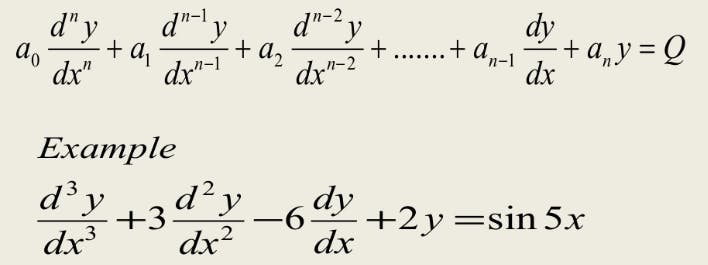Why am I writing about Math topics when I am supposed to write about Coding? That is a legitimate question.
I'm a student at ULPGL Goma in Applied Sciences so Math is all that we study in each subject and it is a major asked for knowledge in everything we see. That's why I wanted to share it with you my journey on this course we began two weeks.
The course itself is named "Applied Mathematics", especially for engineers in this case because this course is not only for us, even in Economics, Social Sciences and other fields where it is necessary, there is such a course.
I did not name this article "On the Way with Applied Math" because I won't be talking about it but about Ordinary Differential Equations. And if you need an article about it, just tell me in the comments.
Without spending more time, let's talk about our topic. My First Impression with ODE. Such a subject on a course like Applied Math has aroused particular interest in me; just like how and where will we exactly apply those materials? They seem to be more used in Telecom and Network but we didn't see any application of these in Building, Mechanics or Computer Engineering. Disappointment at the beginning but we'll wait and we hope so we'll find the application of those strange things in our field.
What does ODE consist of? For those who are familiar with Math definitions, here is a look at it :

But if you don't understand on the image below, a simple definition is that ODEs are equations formed by functions, their derivates, variables and constants. But the target is not only for knowing what they look like but to be able to solve them and introduce them to real word problem-solving.
This begins by knowing how to resolve them. So, I will give only the main methods we learned without explaining each one. The main ways for solving ODEs are :
By using the Variation of parameters method
By using the Indeterminate coefficients method
By using the Order reduction method
By using the Cauchy-Euler method
The choice depends on the equation and the humour of who resolves them. Some equations can be resolved with all of those given methods but others no and others need to combine two or more methods for their solving. So it depends.
As soon as possible, I will write about EDOs applications in some domains so, don't be far away.
That is all about this Impression and keep on for the next.

